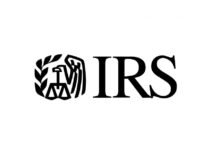What is IMU?
[Note: this article is one in a series about property tax in Italy. Refer to our main guide for an overview]
IMU (Imposta Municipale Propria) serves as Italy's annual property tax, akin to the UK's council tax or the U.S. property tax. This levy is indiscriminate, affecting all property types—residential, commercial, and agricultural lands—within Italy's borders. Understanding IMU is indispensable for anyone contemplating property ownership in this Mediterranean nation.
Calculation
The IMU tax is not arbitrary; it's meticulously calculated based on the cadastral value of the property. This value undergoes adjustments through a series of coefficients and multipliers, culminating in the application of the tax rate. The cadastral value serves as the cornerstone for determining your tax liability, making it a pivotal figure in the IMU equation. As for the definition of cadastre, it is an official land registry that allows the calculation of the official value of a property. This is often far, far removed from the actual market value of a property.
Tax Rate
The standard IMU rate hovers at 0.76%. However, local municipalities wield the discretion to modulate this rate within a spectrum of 0.46% to 1.06%. This latitude allows for variances based on local governance and community needs, making it imperative to consult local tax rates when calculating your potential IMU liability. In practice, you'll ask an accountant to do the maths for you, allowing you to pay your IMU each year.
Payment
IMU is typically remitted in two or three instalments, contingent on the property type and its designated use. This staggered payment structure offers some financial reprieve, allowing property owners to budget more effectively.
IMU Averages in Selected Italian Cities
For those contemplating property ownership in specific Italian cities, average IMU rates can offer invaluable insights:
- Florence: The average IMU rate for residential properties approximates €1,436 per annum. Luxury properties elevate this average to around €1,808 annually.
- Palermo: Residential properties incur an average IMU rate of approximately €1,600 per year, with luxury properties attracting a higher average of around €2,200 annually.
- Bologna: The average IMU rate for residential properties is approximately €1,260 per year, while luxury properties can expect an average rate of around €1,620 annually.
Note: These figures serve as mere averages; the actual IMU rate for a specific property may oscillate based on its location, category, and local municipal decisions.
If you're curious, scroll to the bottom of this article and ask our TAX AI for average IMU rate for some of the larger Italian cities.
Principal Residence Exemption
Eligibility
IMU offers an exemption for an individual's principal residence, with exceptions for properties classified under luxury cadastral categories A/1, A/8, and A/9.
Criteria for Exemption
Two primary criteria must be met for this exemption:
- Registered Residence: The property must be officially recorded in the municipal registry.
- Habitual Residence: The property must serve as the owner's primary dwelling.
Verifications
Municipalities employ utility consumption data, such as electricity and water usage, to corroborate claims of habitual residence.
Multiple Properties
In scenarios involving multiple properties or joint ownership, the exemption is applied on a per-owner basis, contingent upon meeting the stipulated conditions of habitual and registered residence.
Appurtenances
The exemption extends to ancillary components of the main residence, classified under cadastral categories C/2, C/6, and C/7, albeit limited to one unit per category.
Conclusion
Navigating the labyrinthine corridors of Italy's property tax system is non-negotiable for prospective property owners. While IMU constitutes a significant financial obligation, various exemptions and schemes can mitigate its impact. Compliance is not just advisable; it's imperative. Staying abreast of average IMU rates in key cities like Florence, Palermo, and Bologna can further equip property owners in their financial planning.






